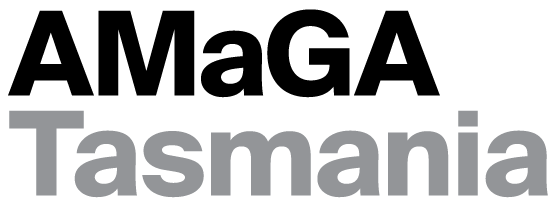QVMAG is hosting
our Christmas get together
2pm Friday 27
November 2020
Don't forget to
RSVP to David.Maynard@launceston.tas.gov.au
Guests will meet key QVMAG curators as you tour Estuary: below the surface (underwater photography exhibition of the Tamar) and Natural Visions (historical landscape photography of Tasmania). We've heard from David Maynard, Senior Curator Natural Sciences in the past so we thought it would interesting to learn more about Jon Addison, QVMAG's Senior Curator of Public History and Natural Visions' Curator.
Tempt us with your
favourite anecdote about the exhibition.
Natural Visions is full of interesting stories and anecdotes, so it's hard to focus on just one. I think an interesting one is the mystery of how HJ King managed to sign the Waldheim Visitors book at Cradle Mountain on the same day he flew over and took the first quality aerial photograph of Dove Lake and Cradle Mountain (on display in the exhibition)! Given there is nowhere to land a light plane at Waldheim, it is unlikely that he was actually there. It turns out that his brother was visiting Waldheim at the time, and at the point at which King and his pilot Catain Huxley flew over, he signed Herbert's name in the book as well, given he was 'there', if not on the ground.
It was my sister
who had the real passion for family stories. My interest was
in any story, real or fictional. It's for that reason that I
think I enjoy working in museums, as I am able to indulge my passion for
discovering and telling stories or all sorts - not just those relating to me
and my family, but stories relating to a huge range of people and events.
You have been working with QVMAG for 12 years. Do you remember how you felt when you first saw the public history collections?
I was amazed at the
depth and breadth of QVMAG's collections. I had been working in museums in
Scotland and England for five years before I came to Tasmania, and had seen and
worked with some pretty amazing collections, but I was completely blown away by
the size and quality of the collections here. From dealing mostly with
subject-specific collections in other museums, I finally got to work with
collections that covered a huge range of topics. The possibilities were
amazing.
Choosing a
favourite object is a pretty hard call. However I think I might have to
nominate the brown corduroy convict trousers from the John Watt Beattie
Collection. These are one of the few surviving items of convict clothing that
are not in 'magpie', or parti-coloured. They raise a whole lot of fascinating
questions, and tell an amazing story. Firstly, the fabric they are made from
shows a transition from corduroy being the 'fabric of the King', to
representing the working man, and finally their use in convict punishment! The
construction technique is fascinating, as they are removable without taking off
leg-irons. Also adding confusion and nuance to the story is the possibility
that this style of trousers were also used by workers as over-trousers, and so
may not relate to leg-irons after all. Beattie's records are what links these
to convicts. There is also even a potential link to William Cuffey, a black
convict political prisoner who trained convict tailors to make garments and use
new sewing-machine technology.
Why do you think it is important to have such a collection?
Museum collections are a tangible link to the past. What we know about past societies is not fixed - our ideas, theories and knowledge change all the time. These collections serve as primary sources to help build a more nuanced and accurate picture of the past.
The larger museums
are like ancient guilds with people who hold very specialist knowledge and
skills. How do you work across these areas?
It is impossible to
be an expert in all areas QVMAG covers. However by building up a network of
knowledgeable people in various fields, it is possible to get access to the
latest ideas, research and specialist knowledge. Subject specialists are
usually very happy to share their knowledge, and with more and more research
becoming available online, it is now possible to find information more quickly
and easily.
Do you have any tips for those with a passion for history working in one of our smaller museums and building their collections?
Having a solid
collection policy is the key in smaller institutions (as well as larger ones).
Without a proper collection policy, it becomes hard to properly shape your
collection to tell the stories that are important to tell, and to instead just
collect everything that is offered to you. Also, when it comes to display, less
is quite often more. Don't try to have your entire collection on display at one
time - not only will this damage more delicate items, but will confuse viewers.
Have a clear idea of what you want to say, and represent it with well-chosen
objects and minimal, focussed text.

























